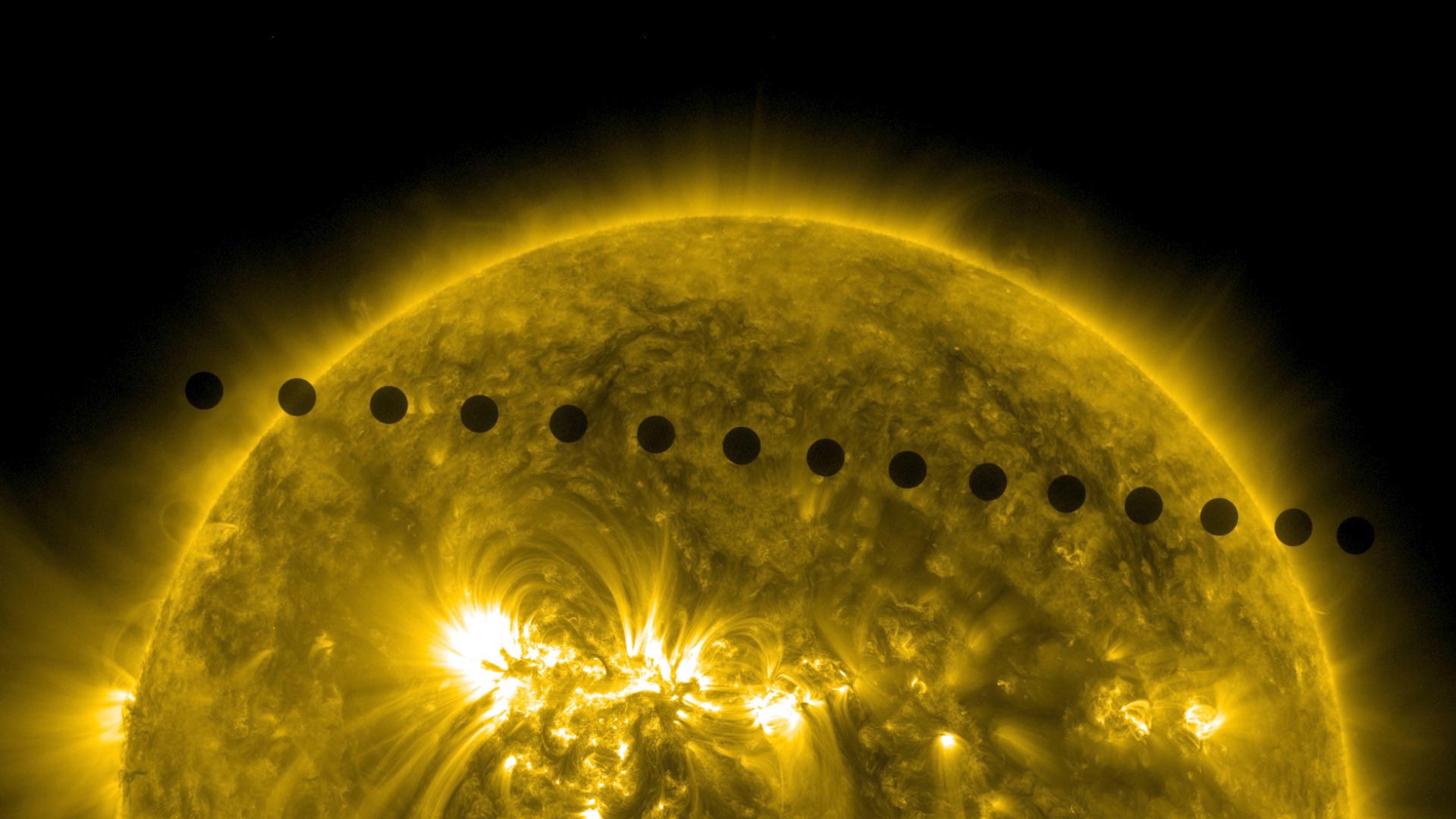Why Venus Rotates, Slowly, Despite Sun’s Powerful Gravitational Pull

A sequence of images from Solar Dynamic Observatory in 171 angstroms of the Venus transit, merged together to show the path of Venus across the sun. Credit: NASA/SDO
The planet’s atmosphere explains the gravity of the situation.
Bright Venus is seen near the crescent moon. Credit: NASA/Bill Dunford
“We think of the atmosphere as a thin, almost separate layer on top of a planet that has minimal interaction with the solid planet,” said Stephen Kane, UCR astrophysicist and lead paper author. “Venus’ powerful atmosphere teaches us that it’s a much more integrated part of the planet that affects absolutely everything, even how fast the planet rotates.”
Venus takes 243 Earth days to rotate one time, but its atmosphere circulates the planet every four days. Extremely fast winds cause the atmosphere to drag along the surface of the planet as it circulates, slowing its rotation while also loosening the grip of the sun’s gravity.
Slow rotation in turn has dramatic consequences for the sweltering Venusian climate, with average temperatures of up to 900 degrees 
Image of Venus acquired by the Akatsuki mission, the first Japanese probe to enter orbit around a planet other than the Earth. Credit: ISAS/JAXA
One reason for the heat is that nearly all of the sun’s energy absorbed by the planet is soaked up by Venus’ atmosphere, never reaching the surface. This means that a rover with solar panels like the one Why Venus Rotates, Slowly, Despite Sun’s Powerful Gravitational Pull

